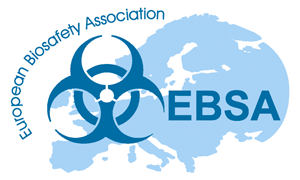About EBSA21 - Course B - Risk assessment methodologies
EBSA21 - Course B - Risk assessment methodologies
Course description
Management of risks related to activities with hazardous biological material, be it research, development, production or diagnostics, requires risk assessment at various stages of the activity. To begin with, the hazards of the various biological materials need to be estimated. Also, when genetic modification is involved methods and tools such as viral vectors, plasmids and types of inserts need to be considered. At a second stage biosafety and biosecurity measures need to be evaluated for their ability to contain the biological material. These measures on their own, whether organizational or technical, have their weaknesses and might be vulnerable to failures which need to be taken into account in incident and accident prevention.
Assessing the risk of such failures is essential with respect to incident and accident prevention. To this aim, application of the appropriate type of methodology of risk assessment such as Fishbone, HAZOP, LOPA, SWIFT, Kinney, FMEA, HACCP, Fault-tree, Bow tie, … is crucial. Even though these methods are applicable for all types of activities with biological material, this course is focusing on human- and animal-related work.
Target audience
The workshop is suitable for all interested and involved in doing thorough biological risk assessment, foremost BSOs facing new challenges regarding genetic modification, biocontainment facilities and complex work processes and situations in research and manufacturing.
Learning objectives
With this course the participant will not only understand the fundamentals and purpose of risk assessment, the terms used in relation to risk evaluation and the basic methods of risk assessment, but also be in a position to judge to what extent a risk assessment needs to be done, what type of methodology is appropriate and how to use the findings resulting from the risk assessment.
Main topics
- fundamentals of risk analysis,
- risk assessment in genetic engineering,
- risk assessment in complex work situations,
- purpose and terms used in risk evaluation,
- advanced methods and applications of risk management
Citation of the respective sections of CWA 16335:2011 Biosafety professional competenceThe course draws on the CWA 15793:2011, specifically on section 4.3.1. on risk planning for hazard identification, risk assessment and risk control and some parts of section 4.3.3.1 on biorisk control objectives and targets.
